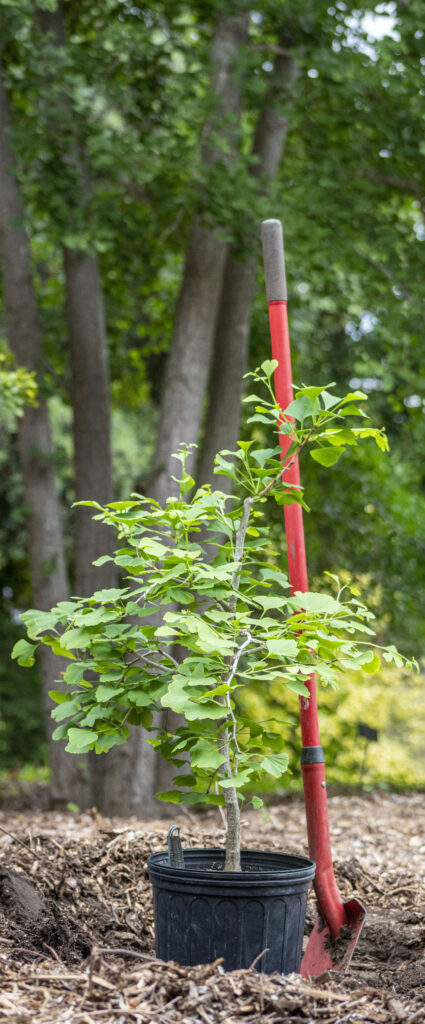San Diego Botanic Garden joins in unity with friends and colleagues from around the globe for the Garden’s annual Survivor Tree Ceremony. Descended from a mother tree that survived the atomic bombing of Hiroshima, Japan 79 years ago, this special gingko tree was planted at San Diego Botanic Garden in May 2023.
The ceremonial event will take place on August 5 starting at 4:00 p.m. We will gather for a moment of silence at 4:15 p.m., corresponding to the exact moment (in Pacific Standard Time) when the citizens of Hiroshima gather to mark the dropping of the A-bomb on August 6, 1945. As a partner and regional hub for the Green Legacy Hiroshima Initiative, San Diego Botanic Garden has also helped distribute Hibakujumoku (A-bomb trees) seedlings throughout North America. The commemoration ceremony will include remarks from special guest speaker Nassrine Azimi, co-founder and coordinator of Green Legacy Hiroshima, as well as a community wish writing activity for attendees to participate.
Please note: The Garden will be open normal hours until 5 p.m., with the last entry at 4:30 p.m. If you would like to experience the full Garden during your visit, it is recommended that you arrive before this event start time to allow enough time to explore.
 This significant tree is the result of a partnership with Green Legacy Hiroshima Initiative, a global campaign aiming to disseminate the universal messages of caution and hope that the unique survivor trees of Hiroshima represent. These trees call to mind the dangers of arms of mass destruction and nuclear weapons in particular, as well as the sacred character of humankind and the resilience of nature. Currently, seeds and saplings from the A-bombed trees are growing in more than 40 countries in a sustained, long-term (1,000-year) campaign, joining other efforts to establish a nuclear-free and more ecological planet.
This significant tree is the result of a partnership with Green Legacy Hiroshima Initiative, a global campaign aiming to disseminate the universal messages of caution and hope that the unique survivor trees of Hiroshima represent. These trees call to mind the dangers of arms of mass destruction and nuclear weapons in particular, as well as the sacred character of humankind and the resilience of nature. Currently, seeds and saplings from the A-bombed trees are growing in more than 40 countries in a sustained, long-term (1,000-year) campaign, joining other efforts to establish a nuclear-free and more ecological planet.
San Diego Botanic Garden received its ginkgo as a seedling from Shukkeien garden in Japan in 2020 and was recently planted on-site in May of 2023.
The ginkgo, Ginkgo biloba, is one of the oldest living tree species in the world. It is the only species from an ancient group of trees that date back to the time before dinosaurs roamed the Earth. Commonly known as the Maidenhair Tree, the ginkgo is also referred to as a living fossil based on its history and ability to live up to 1,000 years. Native to China, it is believed to have been imported to Korea and Japan when Confucianism and Buddhism were introduced from China. Today, it is the only living representative of the order Ginkgoales (division Ginkgophyta), which contained approximately 15 genera that date from the Permian Period (about 298.9 million to 251.9 million years ago). The extinct genera are only known from fossilized leaves that resemble those of the present-day tree. Ginkgos are dioecious plants bearing either male or female flowers but not both, and thus need its opposite in order to reproduce. While we will not know the sex of our ginkgo tree for several decades, the planting symbolizes a hopeful opportunity to continue the lineage of survivor trees for hundreds, potentially thousands, of years to come.
We are honored to be a part of this initiative and invite the community to join us in commemorating the history, legacy, and symbol of peace that this beautiful tree represents

![]()